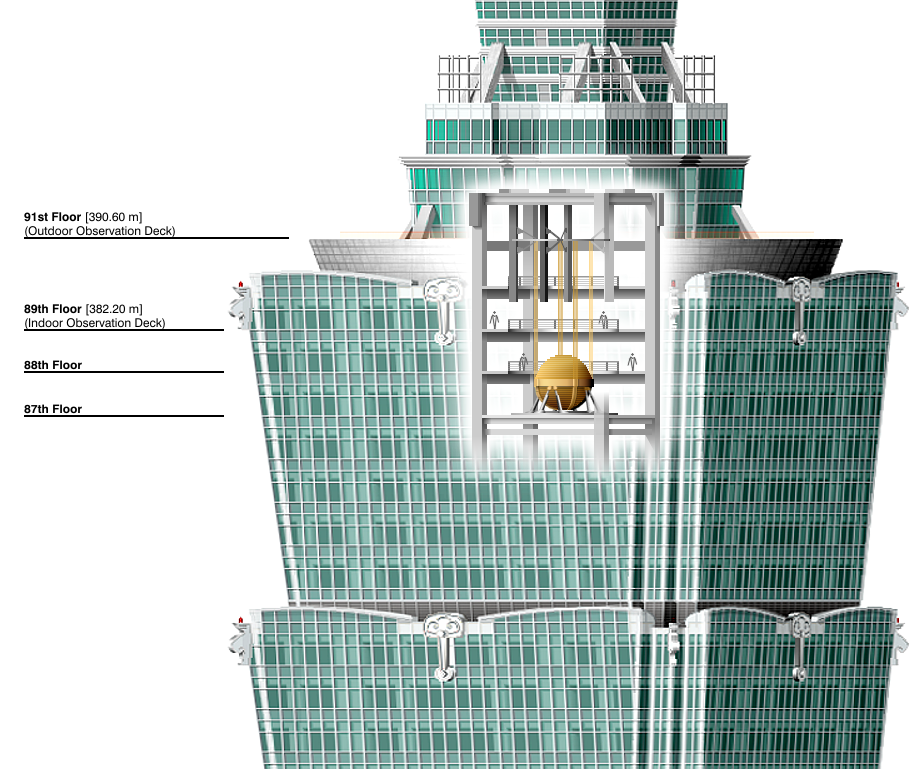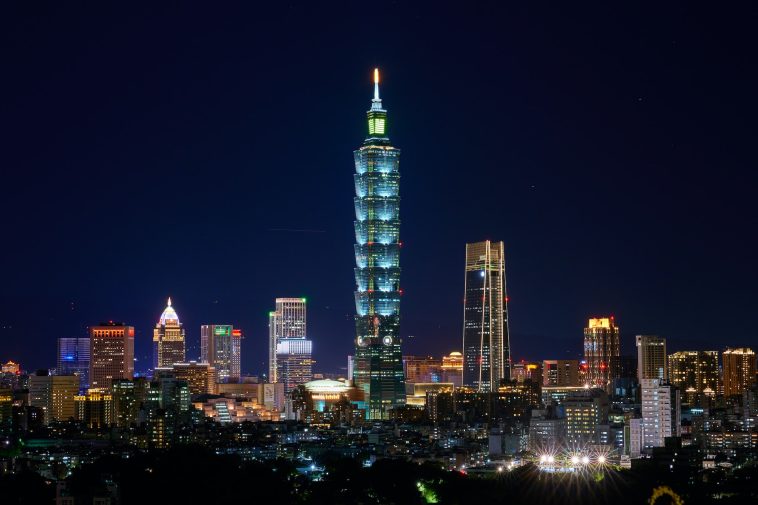Taipei 101, located in Taiwan’s capital city, stands as an extraordinary architectural feat and an iconic landmark. In this blog, we will explore the captivating design, engineering innovations, cultural significance, and sustainable features of Taipei 101, delving into the story of this towering skyscraper that has become an emblem of Taiwan’s modernity.
Design and Symbolism:
Designed by C.Y. Lee and C.P. Wang, Taipei 101 showcases a blend of contemporary and traditional elements. The tower’s design draws inspiration from Asian architecture and cultural symbolism, particularly incorporating motifs of bamboo, a plant revered for its strength and resilience. The overall form resembles stacked pagodas, symbolizing the fusion of ancient wisdom with modern progress.
Structural Marvel:
Rising to a height of 508 meters, Taipei 101 held the title of the world’s tallest building from 2004 to 2010. The structure’s core consists of a composite material made of steel and concrete, providing exceptional strength and flexibility. The innovative outrigger system and tuned mass damper help stabilize the building against typhoon winds and seismic activities, showcasing cutting-edge engineering techniques.
The Damper: A Dance with Nature:

The most distinctive feature of Taipei 101 is its massive tuned mass damper, the largest in the world at the time of its construction. Weighing 660 metric tons, this pendulum-like device counteracts the swaying motion caused by high winds and earthquakes, ensuring the building’s stability and occupant comfort. The damper has become an engineering marvel, attracting visitors who marvel at its graceful dance with nature.
Sustainable Innovations:
Taipei 101 integrates various sustainable design features. The building employs energy-efficient glass, minimizing heat gain and reducing the need for excessive cooling. The rooftop captures rainwater for reuse, and greywater recycling systems conserve water resources. The outdoor gardens and green spaces throughout the tower enhance air quality and create a refreshing environment.
Cultural Significance:
Taipei 101 holds immense cultural significance for Taiwan. It represents the nation’s ambition, technological prowess, and economic growth. The tower has become an iconic symbol of Taiwan’s resilience, ingenuity, and global recognition. The observatory deck on the 89th floor provides panoramic views of the city, offering visitors a chance to appreciate the beauty and dynamism of Taipei.
Feng Shui Principles:
Taipei 101 also adheres to the principles of Feng Shui, an ancient Chinese practice of harmonizing the built environment with nature. The tower’s design incorporates various Feng Shui elements, such as the upward sloping roofline, which signifies prosperity and growth. The use of traditional colors, like red and gold, further symbolizes good fortune and success.
Technological Hub and Economic Impact:
Beyond its architectural splendor, Taipei 101 has had a transformative impact on the surrounding area. The tower serves as a prominent technological and business hub, attracting multinational corporations and fostering economic growth. The presence of prestigious offices, luxury retail spaces, and high-end dining establishments has propelled the development of the Xinyi District into a thriving urban center.
Fireworks and New Year Celebrations:
Taipei 101 has become a focal point for grand celebrations, particularly during New Year’s Eve. The tower’s exterior lighting system accentuates the festivities, showcasing dazzling displays of vibrant colors and patterns. The annual fireworks extravaganza at Taipei 101 has gained international acclaim, drawing millions of spectators and creating a sense of unity and joy.
Taipei 101 stands tall as a testament to human innovation, cultural significance, and sustainable design. Its awe-inspiring architecture, engineering marvels, and adherence to traditional symbolism have made it a global icon and a source of immense



One Comment
One Ping
Pingback:Taipei: A Design Lover's Guide to Taiwan's Beautiful Capital City - DesignAsia Magazine